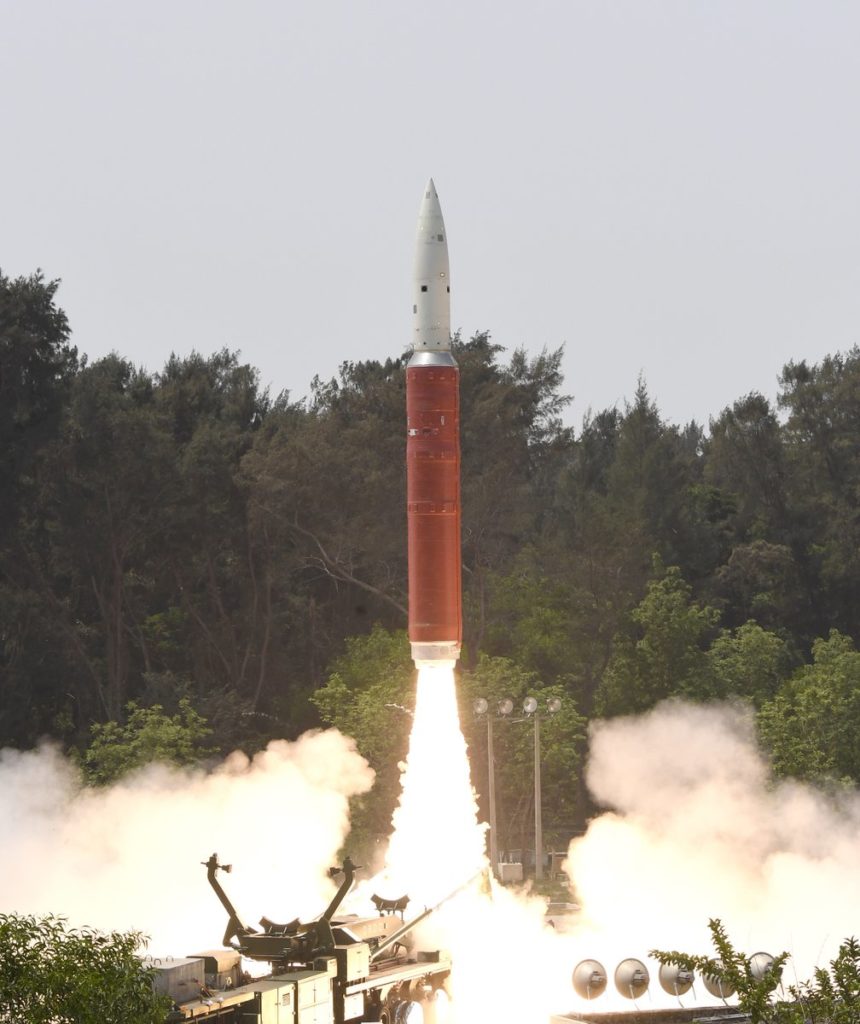India’s first anti–satellite (ASAT) missile test, dubbed as Mission Shakti, has finally been confirmed with India’s Prime Minister Narendra Modi‘s another address to the nation. With this milestone, India has entered an elite space club becoming the fourth nation to do so. Till now only three countries- the US, Russia, and China have demonstrated anti–satellite missile.

Image Source – Press Information Bureau, India
Table of Contents
What is Mission Shakti?
Mission Shakti is India’s first anti-satellite joint weapon programme of the Defense Research and Development Organisation (DRDO) and the Indian Space Research Organisation (ISRO). The DRDO-developed Ballistic Missile Defence (BMD) Interceptor Missile was launched from the Dr. A P J Abdul Kalam Island launch complex near Balasore in the Odisha state of India. The anti–satellite missile is the technological capability to hit and destroy satellites in space through missiles launched from the ground. India targeted its own redundant satellite that was orbiting at a distance of 300 km from the Earth’s surface in a Hit to Kill mode. Indian satellite that was targeted was a Low Earth Orbit (LEO) satellite. LEO satellites are situated at an altitude below 2,000 kilometers from the earth and that’s the region where the majority of satellites are concentrated.
Here is the list of FAQs on Mission Shakti – FAQs on Mission Shakti
Also Check: West Nile Virus || Atmospheric Waves Experiment (AWE) || Bolo App by Google || ISRO Gets Patent For Manufacturing Moon Soil On Earth
History of Anti-Satellite missile system
Anti-Satellite missile systems have a long history and were a product of the Cold War hostilities between the United States and the Soviet Union. They came back into popular currency after China conducted an anti-satellite missile test on Jan 2007. The target was a Chinese weather satellite — the FY-1C – that sailed at an altitude of 865 km. (537 mi). A year later, the US launched Operation Burnt Frost, the code name to intercept and destroy a non-functioning satellite named USA-193.
Concerns related to targeting satellites
Satellites are the extremely critical infrastructure of any country these days. A large number of applications of great importance are now satellite-based. These include navigation systems, communication networks, broadcasting, banking systems, stock markets, weather forecasting, disaster management, and military applications, etc. Destroying a satellite would render these applications useless. It can cripple enemy infrastructure, and bring it down on knees, without causing any threat to human lives.
The problem of space debris
Anything launched into space remains in space, almost forever, unless it is specifically brought down or slowly disintegrates over decades or centuries. Satellites that are past their life and are no longer useful also remain in space, orbiting aimlessly in some orbit. According to The National Aeronautics and Space Administration (NASA), there were 19,137 man-made objects in space that were large enough to be tracked. These included active and inactive satellites, rockets & their parts, and other small fragments. A satellite that is ruined by a missile disintegrates into small pieces and adds to the space debris. The problem of space debris is that it could collide with the operational satellites and render them dysfunctional. With countries launching satellites at a great pace, each one of them being a strategic or commercial asset, avoiding collisions could become a challenge in the future. Countries do not want to complicate matters by creating more debris in space.
Is weaponizing space legal?
Almost every country concur that space must not be used for wars and has spoken against weaponisation of space. There are international treaties governing the use of space that mandate that outer space and celestial bodies like the Moon, must only be exploited for peaceful purposes.
Outer Space Treaty of 1967
- The Outer Space Treaty, to which India is a signatory, prohibits countries from placing into orbit around the Earth any objects carrying nuclear weapons or any other kinds of weapons of mass destruction.
There are at least four more multilateral treaties that deal with specific concepts agreed to in the Outer Space Treaty. None of these, however, prohibits the kind of test that India carried.
As is mandatory for any missile test, India did issue a Notice to Airmen (NOTAM) to airline authorities across the world informing them about an imminent missile test. This notice (NOTAM) doesn’t have to specify the kind of missile being tested, only the flight path and the region affected, so that airborne systems are able to avoid it.
Alternatives to target enemy satellites
Some countries, in the last few years, have explored alternative options of making enemy satellites dysfunctional, options that do not involve direct destruction of the target or creation of the debris.
- By jamming the communication from the satellites by interfering with its radio signals. This can be done during the uplink or the downlink.
- By sending close proximity anti-satellite that could just approach a target close enough to deviate it from its selected orbit, without destroying it. Soe space agencies are developing this close proximity to anti-satellite technologies.
- By using ground-based lasers to dazzle the sensors of the satellites and make them at least partially blind so that they are unable to work efficiently.



2 Comments
PSLV-C45 mission (EMISAT satellite) - STUDIOUSLY YOURS · March 31, 2019 at 11:32 pm
[…] may also like to read: Mission Shakti || West Nile Virus || Bolo App || Atmospheric Waves […]
SBI PO 2019 Notification Apply Online (2000 Posts) - Studiously Yours · April 3, 2019 at 3:53 pm
[…] Check Important Current Affairs: PSLV-C45 mission (EMISAT satellite) || Mission Shakti || West Nile Virus […]